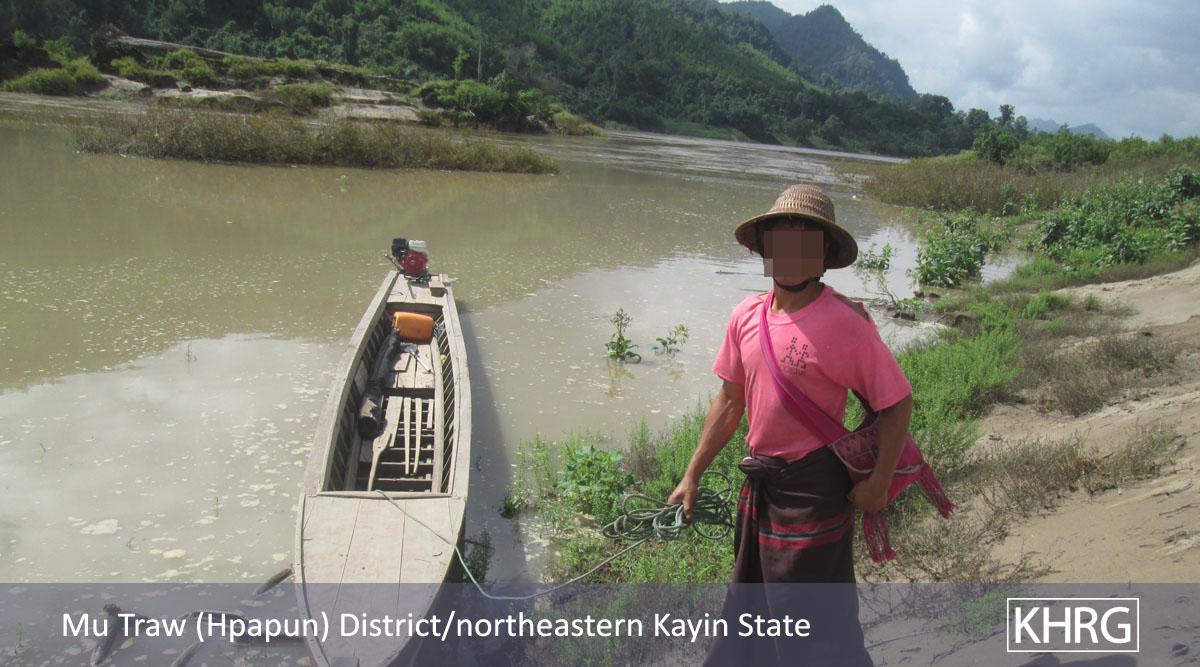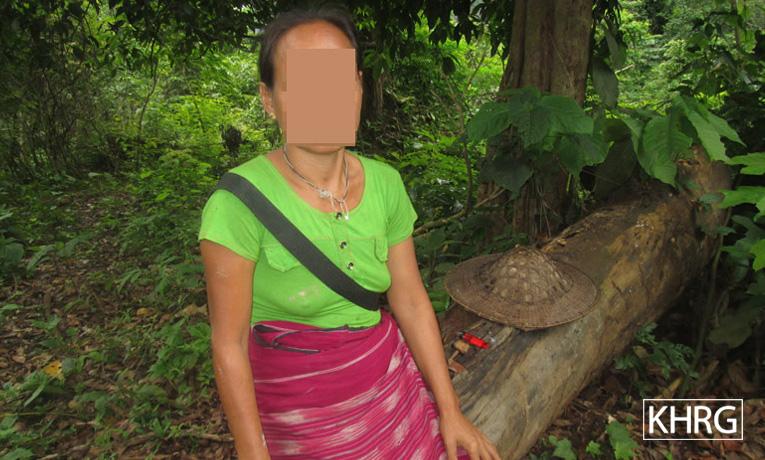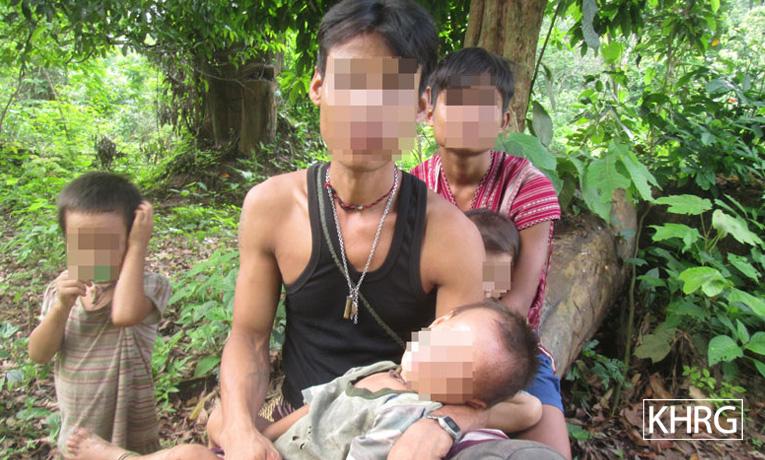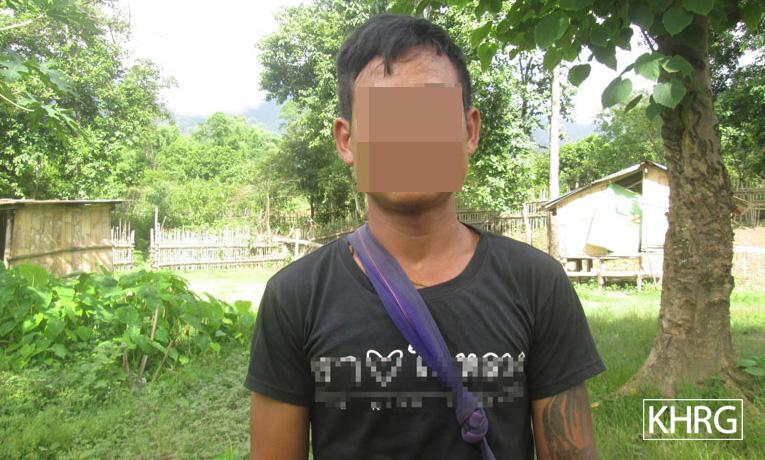This Incident Report describes events that occurred in Bu Ah Der village tract,[1] Bu Tho Township, Mu Traw (Hpapun) District in May and June 2020, including two cases of arbitrary detention and indiscriminate shelling by Tatmadaw’s[2] Light Infantry Battalion (LIB)[3] #407, Military Operations Command (MOC)[4] #8. On May 18th 2020, Tatmadaw soldiers fired at least five mortar shells at civilian areas in response to attacks by the Karen National Liberation Army (KNLA),[5] but only three of them exploded. Nine villagers from A--- village, Bu Ah Der village tract were also detained by LIB #407 for four days starting on May 19th 2020. Similarly, on June 13th 2020, more than 10 villagers were detained for several hours by LIB #407 soldiers after being arrested near the Kaw Kaw Hta army camp while travelling by boat.[6]
Part 1 – Incident Details
|
Type of Incident |
Arbitrary detention and indiscriminate shelling |
|
Date of Incident(s) |
Indiscriminate shelling: May 18th 2020 Arbitrary Arrest: May 19th to May 23rd 2020; June 13th 2020 |
|
Incident Location (Village, Township and District) |
Bu Ah Der village tract, Bu Tho Township, Mu Traw District |
|
Victim Information[7] |
||||
|
Name |
Naw[8] I--- |
Saw J--- |
Saw[9] K--- |
Saw L--- |
|
Age |
42 |
40 |
33 |
39 |
|
Sex |
Female |
Male |
Male |
Male |
|
Ethnicity |
Karen |
Karen |
Karen |
Karen |
|
Family |
Married |
Married |
Married |
Married |
|
Occupation |
Farming |
Farming |
Boat driver |
Boat driver |
|
Religion |
Buddhist |
Buddhist |
Buddhist |
Buddhist |
|
Position |
Villager |
Village head |
Villager |
Villager |
|
Village |
A--- village |
A--- village |
B--- village |
C--- village |
|
Perpetrator Information (Armed Actors) |
||||
|
Name(s) |
Rank |
Unit |
Base |
Commander’s Name |
|
Unknown |
Battalion Commander |
Light Infantry Battalion #407 |
Kaw Kaw Hta camp |
MOC #8 |
Part 2 - Information Quality
|
1. Explain in detail how you collected this information. |
|
From June 21st to June 23rd 2020, a KHRG researcher conducted a total of four interviews with villagers in A---, B--- and C--- villages, Bu Ah Der village tract, Bu Tho Township. |
|
2. Explain how the source verified this information. |
|
The villagers interviewed by KHRG were part of the groups that were arrested and detained by the Tatmadaw from May 19th to May 23rd and on June 13th 2020. |
Part 3 – Complete Description of the Incident
|
Describe the Incident(s) in complete detail. |
|
Incident 1: Indiscriminate shelling and arbitrary detention
The A--- village head, Saw J---, stated that the KNLA did not allow the Tatmadaw to operate in the restricted areas[10] because the local people and the KNLA have noticed that the Tatmadaw was sending more soldiers whenever they transported rations. They think that it is part of a Tatmadaw’s strategy to take control of the area.
Saw J--- explained the current situation to KHRG: “It is about the increasing number of Tatmadaw soldiers. […] They stood guard along the road without informing the local people or local leaders. They also set up more camps in D--- village. In that case, they were fired at [by the KNLA]. Some of them were also injured because of landmines. They were angry about this and they also opened fire indiscriminately. They fired at nearby places, but not at the village vicinity. […] When I asked the frontline soldiers [KNLA], I learnt that the Tatmadaw was building new roads and new camps.”
On May 18th, at around 9 am, Tatmadaw soldiers fired several mortar shells in the Bu Ah Der village tract area [in response to KNLA attacks, presumably after Tatmadaw troops trespassed into KNU territory]. Saw J--- told KHRG that, out of the five mortar shells fired by the Tatmadaw, only three exploded. One of the shells exploded near the house of a villager in A--- village. Fortunately, no one was injured. Villagers in A--- village assumed that the shelling was done by LIB #407.
The villagers from A--- village thought that the shelling was a warning to urge them to go and meet the Tatmadaw as soon as possible. Therefore, Saw J--- and eight other villagers, Naw I---, Naw M---, Naw N---, O---, P---, Q---, U[11] R--- and U S--- went to the Kaw Kaw Hta camp on foot. It took them approximately two hours to get there. The camp is located southeast of the village, at a 2-mile [3.22 km] distance.
When villagers arrived at the camp, the LIB #407 soldiers reportedly welcomed them and talked nicely to them. The Tatmadaw battalion commander asked Saw J---: “Why did they [Karen National Defence Organisation[12]-KNLA] fire at us [attack us]? […] Htee Ber [KNLA officer] is doing foolish things. Why don’t you report him to the higher authorities?” Saw J--- replied: “I don’t know why, they might have had a reason.”
The Tatmadaw then ordered the villagers to stay at the camp until the arrival of Deeh Ka, a Border Guard Force (BGF)[13] leader who was expected to update the commander about the security situation along the Meh Leh Hta old road. However, Deeh Ka kept postponing his arrival. He finally arrived on May 23rd 2020, after which the villagers were released. Before letting them go, the battalion commander asked the villagers to write down their names, the name of their village and the date. He did not explain to the villagers why they had to do it.
The Tatmadaw commander also told Saw J--- to convince the KNLA to stop its attacks against the Tatmadaw: “Tell them to stop shooting us. I have faced this many times already, so I cannot tolerate it anymore. I also have done things wrong. Now, people will see that I have forced you all to stay here, but I did not do anything to you. The shelling [at civilian areas] was also my fault. It was because I could not tolerate it anymore after I faced it [being attacked by the KNDO-KNLA] several times. I will take the blame.”
The commander also told the village head to ask the KNLA for the permission to use the Meh Leh Hta old road freely: “Tell them [KNLA] this: ‘Do not disturb me on the road.’ I won’t disturb them either; they can circulate as they want. […] But if they do not want to do this, I can’t do anything. Just ask for permission [for me] to use the road. If I trespass, they can shoot.” However, the village head refused to comply: “I will not ask for it anymore. I have nothing more to tell you about the road situation that is all. As I said, when it is related to politics, civilians should not ask permission for you. [Local leaders] should not do it for you either. Many of your leaders have actually asked permission already. If it were going to work, it would have worked already. We, the civilians, cannot step in on this case.”
The nine villagers were detained for a total of four days, from May 19th to May 23rd. They were treated well and were given enough food. The seven male villagers were detained in a BGF shelter beside the Tatmadaw camp. The two female villagers were detained in a hut beside the army camp. The hut is a small shop that belongs to a villager called Saw F---. Naw I---, one of the female villagers, recounted her detention: “They gave us plenty of food. […] They did not ask us to work but they did not allow us to come back either. […] It was uncomfortable and we were also worried while we were there. I left two of my children behind [at home] when we went there [to the camp]. Both their father and I went there, so I thought: ‘Who will look after them’?”
The Tatmadaw ordered the villagers to use the Meh Leh Hta old road between the Kaw Kaw Hta and Haw Ma Daw camps to go back to their village despite its dangerousness [due to the presence of landmines]. Naw I--- said: “They just asked us to come back by the road between the two Tatmadaw camps. It was risky though. We did not know anything. When we got back, we asked the young people here [KNLA soldiers] about the situation. They told us that the road we used on the way back is indeed dangerous.”
In the end, Saw J--- did inform Hpa Dah [KHRG was not able to establish the exact date], a KNLA commander about the Tatmadaw’s request, after which the KNLA allowed the Tatmadaw to use the Meh Leh Hta old road. Since May 19th 2020, villagers are always questioned and checked whenever they travel by boat, as the Tatmadaw suspects that they might transport supplies for the KNLA.
Arbitrary detention
On that day, the villagers were travelling on five boats. The group was composed of Saw K---, Saw L---, Saw T--- and his wife, Saw U--- and his wife, Naw V--- and others. One of these villagers told KHRG that they were stopped by the Tatmadaw soldiers. The soldiers told them: “We will not let any of your boats travel to the [Thai] border.”
The Tatmadaw arrested all the villagers and kept them in Saw F’s hut. According to some of the villagers who were arrested, the Tatmadaw detained them because they were angry at Saw J--- and at a villager from Y--- village named Saw X---. LIB #407 soldiers wanted to transport rations to the Haw Ma Daw army camp, but they were concerned about their security because the KNLA is active in the area and tensions between the two armed groups were high at the time.
Therefore, LIB #407 commander had previously ordered Saw X--- and Saw J--- to convince the KNLA to allow the Tatmadaw soldiers to transport their rations. Villagers in Y--- village usually rely on Saw X--- to deal with the Tatmadaw because he can speak Burmese.
Saw K---, a villager from B--- village told KHRG that the soldiers were angry because Saw X--- and Saw J--- had failed to tell them whether they had secured permission from the KNLA to use the Meh Leh Hta old road: “They did not scold us, but they were aggressive about their own business… about [the fact that] people [referring to Saw X--- and Saw J---] did not update him [the battalion commander] about the situation, whether they could transport their rations or not.” Saw L---, a villager from C--- village, added: “[T]hey were in terrifying anger when they stopped us, but we did not know what was going on.”
The Tatmadaw ordered two of the villagers to go and pick up Saw X--- and Deeh Ka, a local BGF leader, and to bring them to the Tatmadaw camp. Saw L---, one of the boat drivers, went to Noh Day village to pick up Deeh Ka. Although Deeh Ka did not come with the villager, he gave him a letter for the Tatmadaw. Another villager picked up Saw X--- in Y--- village. The villager who was asked to pick up Deeh Ka had to travel for about two hours by boat and on foot to reach Noh Day village. The Tatmadaw commander did not cover any of the travel costs [gas fees].
When Saw X--- arrived at the army camp, he was first kept with the other villagers. He later updated the Tatmadaw about the situation on the Meh Leh Hta old road: “People [KNLA] planted landmines, but they do not feel safe to remove them. If you [Tatmadaw] dare to go [to use the road], you can go.” After the update provided by Saw X---, the Tatmadaw released the villagers at 12 pm and let them travel to the border. They were then able to buy food and come back to their village.
The actions of the Tatmadaw, coupled with the increase in tensions between the Tatmadaw and the KNLA in the area, have raised security concerns among the local population. Saw L--- stated: “I still have to travel in fear. […] I worry that, if anything [fighting between the KNLA and the Tatmadaw] happens, they [the Tatmadaw] will detain me and force me to work for them. As you know, it is in the nature of the Tatmadaw. They can cause trouble for you and detain you whenever they want.”
About the Kaw Kaw Hta army camp |
Part 4 - Permission for Using the Details
|
Did the victim(s) provide permission to use this information? Explain how that permission was provided. |
|
The victims gave KHRG permission to use this information. |
Footnotes:
[1] A village tract is an administrative unit of between five and 20 villages in a local area, often centred on a large village.
[2] Tatmadaw refers to the Myanmar military.
[3] A Tatmadaw Light Infantry Battalion (LIB) comprises 500 soldiers. However, most Light Infantry Battalions in the Tatmadaw are under-strength with less than 200 soldiers. Yet up to date information regarding the size of battalions is hard to come by, particularly following the signing of the NCA. LIBs are primarily used for offensive operations, but they are sometimes used for garrison duties.
[4] Military Operations Command (MOC) is comprised of ten battalions for offensive operations. Most MOCs have three Tactical Operations Commands (TOCs) made up of three battalions each.
[5] The Karen National Liberation Army is the armed wing of the Karen National Union.
[6] The present document is based on information received on July 23rd 2020. It was provided by a community member in Mu Traw District who has been trained by KHRG to monitor human rights conditions on the ground. The names of the victims, their photos and the exact locations are censored for security reasons. The parts in square brackets are explanations added by KHRG.
[7] This table only includes the names of the victims that were actually interviewed by KHRG.
[8] Naw is a S'gaw Karen female honorific title used before a person's name.
[9] Saw is a S’gaw Karen male honorific title used before a person’s name.
[10] As per the 2012 preliminary ceasefire agreement between the KNU and the Burma/Myanmar government, the Tatmadaw are only allowed to operate and travel up to 50 yards from either side of roads that connect their army camps through KNLA territory, and only within a 150 yard radius around their own army camp.
[11] U is a Burmese title used for elder men, used before their name.
[12] The Karen National Defence Organisation (KNDO) was formed in 1947 by the Karen National Union and is the precursor to the Karen National Liberation Army (KNLA). Today the KNDO refers to a militia force of local volunteers trained and equipped by the KNLA and incorporated into its battalion and command structure; its members wear uniforms and typically commit to two-year terms of service.
[13] Border Guard Force (BGF) battalions of the Tatmadaw were established in 2010, and they are composed mostly of soldiers from former non-state armed groups, such as older constellations of the DKBA, which have formalised ceasefire agreements with the Burma/Myanmar government and agreed to transform into battalions within the Tatmadaw.
[14] Place refers to the name given by local communities to a specific location. It is smaller than what local communities refer to as an area.















